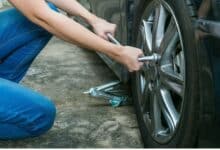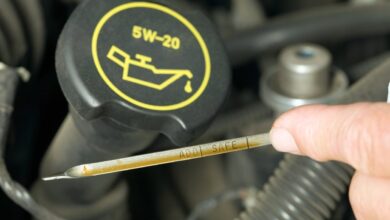Changing Your Car Filter at Home: A Simple Guide for Beginners

Embarking on the journey of DIY car maintenance can be both empowering and cost-effective. This simple guide is tailored for beginners, providing step-by-step instructions on changing your car filter in the comfort of your own home. From air filters to oil filters, we’ll cover the basics to help you understand the importance of regular replacements. Equip yourself with essential knowledge, gain confidence in tackling basic car care tasks, and enjoy the satisfaction of contributing to your vehicle’s well-being. Join the ranks of self-sufficient car owners with this straightforward guide to changing your car filter at home.

Contents
- 1 Understanding the Importance of Car Filters
- 2 Identifying Different Types of Car Filters
- 3 Gathering the Necessary Tools and Supplies
- 4 Step-by-Step Guide: Changing Your Air Filter
- 5 Step-by-Step Guide: Changing Your Oil Filter
- 6 Step-by-Step Guide: Changing Your Cabin Air Filter
- 7 Breath of Fresh Air: A Beginner’s Guide to Changing Your Car Filter at Home
Understanding the Importance of Car Filters
Before delving into the process of changing your car filter, it is crucial to understand the vital role that filters play in your vehicle’s overall performance. Car filters are responsible for removing impurities from the air, fuel, and oil that enter your engine and cabin. By doing so, they prevent contaminants from causing damage and ensure optimal engine efficiency. Regularly replacing these filters will help maintain your car’s performance, fuel economy, and overall health.
Identifying Different Types of Car Filters
To change your car filter, you first need to identify the specific type of filter that requires replacement. Most vehicles have three main types of filters: air filters, oil filters, and cabin air filters.
Air Filters
Air filters prevent dirt, dust, pollen, and debris from entering the engine’s combustion chamber. They are commonly located under the hood, within a rectangular or cylindrical housing. Regularly changing your air filter ensures proper airflow and maintains engine performance.
Oil Filters
Oil filters are responsible for removing contaminants from engine oil, such as metal shavings and dirt particles. The oil filter is typically located near the engine block. Regularly replacing your oil filter ensures clean oil circulation, which helps prolong engine life and maintain lubrication.
Cabin Air Filters
Cabin air filters are often overlooked but are equally important. These filters purify the air that enters your vehicle’s cabin by trapping dust, pollen, and other allergens. Located behind the glove compartment or under the dashboard, replacing cabin air filters improves air quality inside your car and ensures a comfortable driving experience.
See more: How Often Should You Service Your Car?
Gathering the Necessary Tools and Supplies
Once you have identified the specific filter that requires replacement, it’s time to gather the necessary tools and supplies for the job. Here’s what you’ll need:
- New filter (compatible with your vehicle’s make and model)
- Screwdriver (flathead or Phillips, depending on your car’s requirements)
- Pliers (if necessary)
- Gloves (to protect your hands from dirt and debris)
- Safety glasses (to shield your eyes from any potential hazards)
Step-by-Step Guide: Changing Your Air Filter
In this section, we will provide you with a step-by-step guide on how to change your air filter at home.
Step 1: Locate the Air Filter Housing
- Open your car’s hood and locate the air filter housing. It is a rectangular or cylindrical box usually situated near the front of the engine.
Step 2: Remove the Old Filter
- Carefully remove the housing cover by unfastening any clips or screws holding it in place.
- Take out the old air filter and inspect it for dirt and debris accumulation.
Step 3: Clean the Housing
- Before inserting the new filter, clean the housing to remove any dirt or debris that may have accumulated.
Step 4: Install the New Filter
- Place the new air filter into the housing, ensuring it fits snugly.
- Double-check that the filter is properly aligned with any arrows or markings on the housing.
Step 5: Reassemble the Housing
- Put the housing cover back into place and secure it with clips or screws.
Step 6: Close the Hood
- Close your car’s hood, and you’re done! You have successfully changed your air filter at home.
Step-by-Step Guide: Changing Your Oil Filter
In this section, we will guide you through changing your oil filter at home.
Step 1: Locate the Oil Filter
- Raise your vehicle using a jack or ramps to access the underside.
- Locate the oil filter. It is usually a cylindrical-shaped metal component connected to the engine block.
Step 2: Prepare for Removal
- Place an oil pan beneath the oil filter to catch any oil that may spill during removal.
- Wear gloves to protect your hands from hot components and oil.
Step 3: Remove the Old Filter
- Using an oil filter wrench or by hand (if possible), turn the oil filter counterclockwise to loosen and remove it.
- Allow any remaining oil to drain into the pan.
Step 4: Clean the Mounting Surface
- Clean the area where the oil filter mounts on the engine block using a clean rag.
Step 5: Install the New Filter
- Apply a thin layer of fresh oil to the rubber gasket on the new oil filter.
- Screw in the new oil filter clockwise until it is snug. Do not overtighten.
Step 6: Refill with Fresh Oil
- Refill your engine with fresh oil according to your vehicle manufacturer’s specifications.
Step 7: Dispose of Old Oil Properly
- Dispose of the old oil and used filter at an approved recycling facility or an auto parts store that accepts used oil.
Step-by-Step Guide: Changing Your Cabin Air Filter
In this section, we will provide you with a step-by-step guide on how to change your cabin air filter at home.
Step 1: Locate the Cabin Air Filter Housing
- Open your vehicle’s front passenger door and locate the cabin air filter housing.
- It is typically located behind the glove compartment or under the dashboard.
Step 2: Remove Access Panel or Cover
- Remove any access panel or cover that protects the cabin air filter housing.
- This may involve unscrewing or unclipping parts depending on your vehicle model.
Step 3: Take Out the Old Filter
- Carefully slide out the old cabin air filter from its slot.
- Take note of its orientation for proper installation of the new filter.
Step 4: Clean the Housing
- Use a vacuum cleaner or a clean cloth to remove any debris or dust from inside the housing.
Step 5: Install the New Filter
- Insert the new cabin air filter into its designated slot.
- Ensure proper orientation by aligning any arrows or markings on both sides of the filter.
Step 6: Reassemble the Housing
- Put back any access panel or cover that was removed earlier.
- Make sure it is securely fastened in place.
Breath of Fresh Air: A Beginner’s Guide to Changing Your Car Filter at Home
Changing your car filters at home can be a simple yet rewarding task. By following this step-by-step guide, you can easily maintain your car’s performance and save money on professional service fees. Remember to check your vehicle’s manual for specific instructions and recommended maintenance intervals. Regularly changing your air filter, oil filter, and cabin air filter will contribute to a healthier engine, improved fuel efficiency, and a more pleasant driving experience overall. Take charge of your car’s maintenance and confidently tackle this straightforward DIY task today!
See more news at: car care vip




































